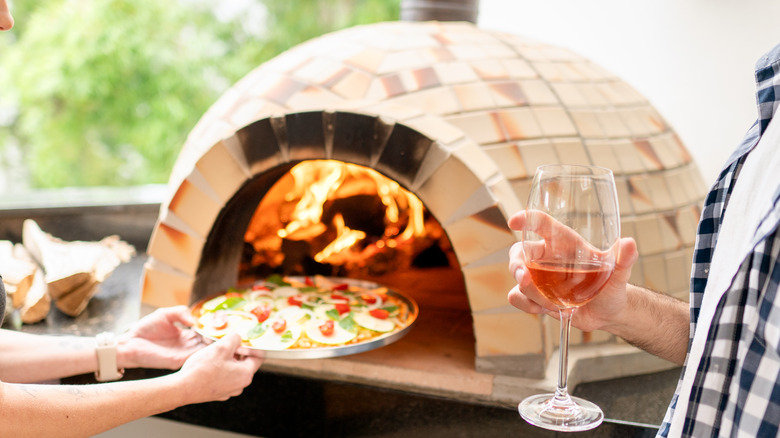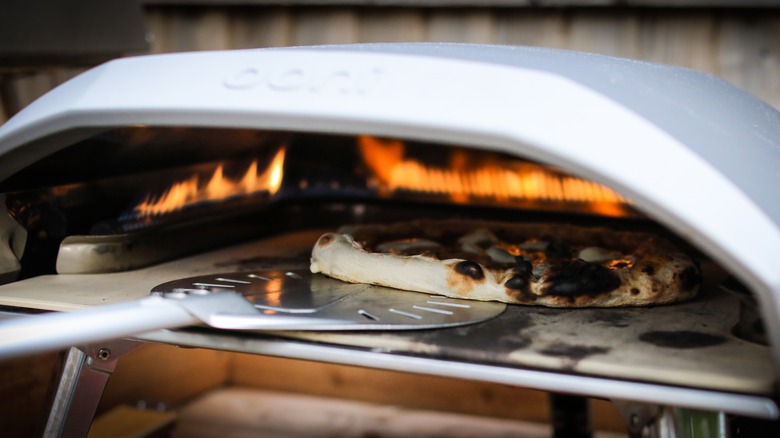What To Consider When Choosing An At-Home Pizza Oven
Making a good pizza at home has never been more achievable, thanks to the extensive variety of ovens now available. However, the type of pizza oven you choose can significantly impact both the texture and flavor of your homemade pizza, influencing everything from the crispiness of the crust to the smokiness of the toppings.
The two most common varieties on the market are wood-fired and gas-fired pizza ovens. Each type offers unique advantages and disadvantages, catering to different preferences, environments, and cooking styles. Wood-fired pizza ovens are often celebrated for their ability to impart distinctive smoky flavors to pizzas, providing a rich and traditional taste. In comparison, gas-fired pizza ovens are well known for their reliable and consistent cooking due to efficient heat distribution, offering a more straightforward approach to pizza preparation at home. Understanding these differences can help you choose the best oven for your particular needs — and a pizza oven might just be the best cooking investment you ever make!
Get that wood-burned flavor with wood-fired pizza ovens
While all at-home pizza ovens are appreciated for their ability to reach temperatures much higher than a standard oven, wood-fired pizza ovens, in particular, are known for their ability to reach extremely high temperatures, allowing most pizzas to cook in just a matter of minutes. This quick, intense cooking process often results in a crispy, charred crust with a soft, fluffy interior. Wood-fired pizza ovens are ideal for cooking Neapolitan pizza dough due to its light and thin nature.
Despite their advantages, wood-fired pizza ovens may not be the best option if you are not willing to keep up with the patience or extra TLC this type of oven requires. Cooking with wood means you also need to deal with sourcing firewood and a fair amount of cleanup to get rid of ash and soot. Additionally, managing the fire and maintaining the right temperature can be challenging, especially for beginners. Making a wood-fired pizza can be a more time-consuming process when you take into account lighting the fire and maintaining it. The entire process involves a significant learning curve to achieve the perfect balance of heat and smoke. You also need a dedicated outdoor space that allows for proper ventilation, and you need to feel comfortable working with open flames. However, if you are up for the task, a wood-fired pizza oven is the ideal choice for a classic, traditional pizza-making experience, both in terms of the process and the finished results.
Get an even cook with gas-fired pizza ovens
If being able to control the temperature of your pizza oven is important to you, a gas-fired oven is the ideal choice. This is particularly important if you plan on cooking any gluten-free pizzas, as these need to be cooked at a lower temperature for the best results.
Gas-fired pizza ovens are also convenient, making them the best choice for lazy weeknights when you might not care to tend to a fire that needs supervising. With the simple turn of a knob, you can achieve the perfect cooking temperature in just a few minutes. This ease of use and quick heat-up time make gas-fired ovens a practical option for those who want to enjoy homemade pizza without the hassle of managing a wood fire.
The biggest downside of a gas pizza oven is its inability to impart that same smoky flavor as its wood-fired counterpart. Gas-fired ovens also lack the rustic charm and hands-on experience that many love. However, if ease and convenience have your name written all over them, gas-fired ovens are your best bet.


